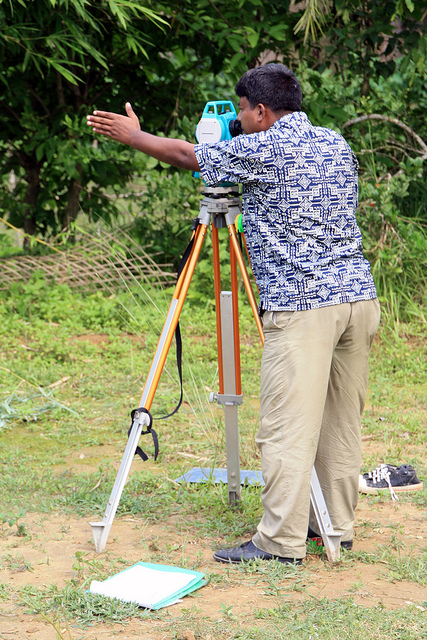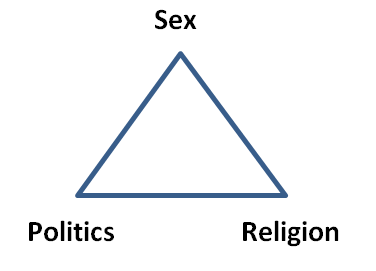 One of my earliest professional gigs was as a land surveyor. One technique surveyors use is triangulation, finding a position or location based on two other, known fixed points. Triangulation, i.e., cross-checking, is also a technique used by resolutionaries, such as mediators. We use multiple sources of information, signals, to locate that sweet spot of resolution.
One of my earliest professional gigs was as a land surveyor. One technique surveyors use is triangulation, finding a position or location based on two other, known fixed points. Triangulation, i.e., cross-checking, is also a technique used by resolutionaries, such as mediators. We use multiple sources of information, signals, to locate that sweet spot of resolution.
Triangles
I’ve been thinking a lot about triangles of late. When I’m working with people who are in conflict, I typically approach the conflict from at least three dimensions. One model I use is:
Process is how we talk about things, emotions are all about the relationship, and content is what we talk about; i.e., the issues. Roger Fisher on process, John Gottman on relationships, and Robert Mnookin on parsing out negotiating content, have been valuable resources to me around this model.
Another lens I seem to gravitate to is the holy grail of sex, politics, and religion.
Sex stands in for our instincts, politics on how we organize our society/world, and religion, our core beliefs and values. For some interesting perspectives on these dimensions, how about Harville Hendrix on why we chose our spouse (hint: its not just about sex), Machiavelli on power politics, and Huston Smith, on religion, of all sorts. Irvin Yalom will help you out with the psychological baggage of conflict, starting with self. Or closer to the mediator playground, I’ve drawn sustenance from mediator Stephanie West Allen’s blog, Brains on Purpose.
The power of triangles
Buckminister Fuller understood the power of interlocking triangles. So, as conflict resolvers, why not us! If we take two triangles (maybe those above?) and overlap them, adding a bit of depth to our understanding, it could look like this:
Look familiar? To the Jewish people, this Star of David symbolizes God’s rule over the universe in all six directions: north, south, east, west, up and down. The two triangles also represent the dichotomies inherent in each of us: for good vs. evil, spiritual vs. physical, etc. Life is a paradox. Diversity is good.
And there’s more
Tina Monberg is a Danish lawyer, mediator and psychotherapist. I’ve recently connected with her through the cyberchannels, and find her themes engaging; i.e., the butterfly effect, a life design born in harmony with the laws of nature based on three core elements: flow, balance and reciprocity. In fact, she sees many powerful examples of systems containing three core elements;
- Mind, Body and Spirit
- The Father, Son and Holy Spirit
- The Legislature, Executive and Judicial Powers
- Past, Present and Future
- Libert, Egalit, and Fraternit
Triangles all.
So…
Homage to collaboration expert Kare Anderson, for the term sweet spot, which she uses to describe a collaborative partnership; one with a sweet spot of mutual benefit.
The sweet spot of resolution the place you hang your hat, reconcile the differences, and find that balance point of shared interests.
What triangle system do you work with?
Photo credit: Rainer Ebert
If you enjoyed this post, please consider leaving a comment or subscribing to my blog. Thanks, Ben.




Thanks very much for the kind mention, Ben. I was surprised and very appreciative.
You’re welcome Stephanie. I enjoy your writings.
As a land surveyor I got a real kick out of this post! Cheers from Connecticut.
CT… Glad you enjoyed it.
stimulating
had always been fascinated by the geometry in triangles , but now with exposure to you i can see the larger picture
thanks
suresh